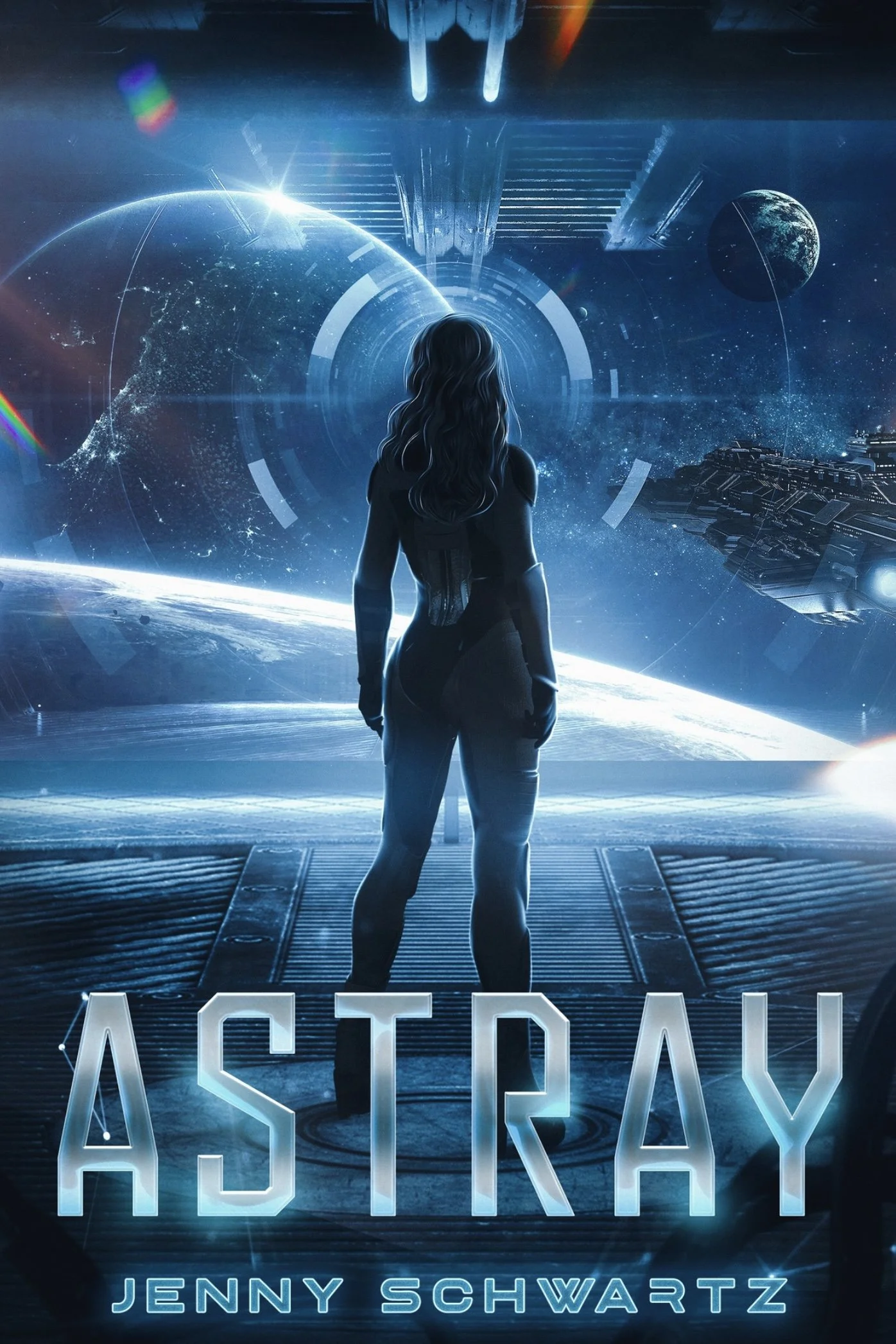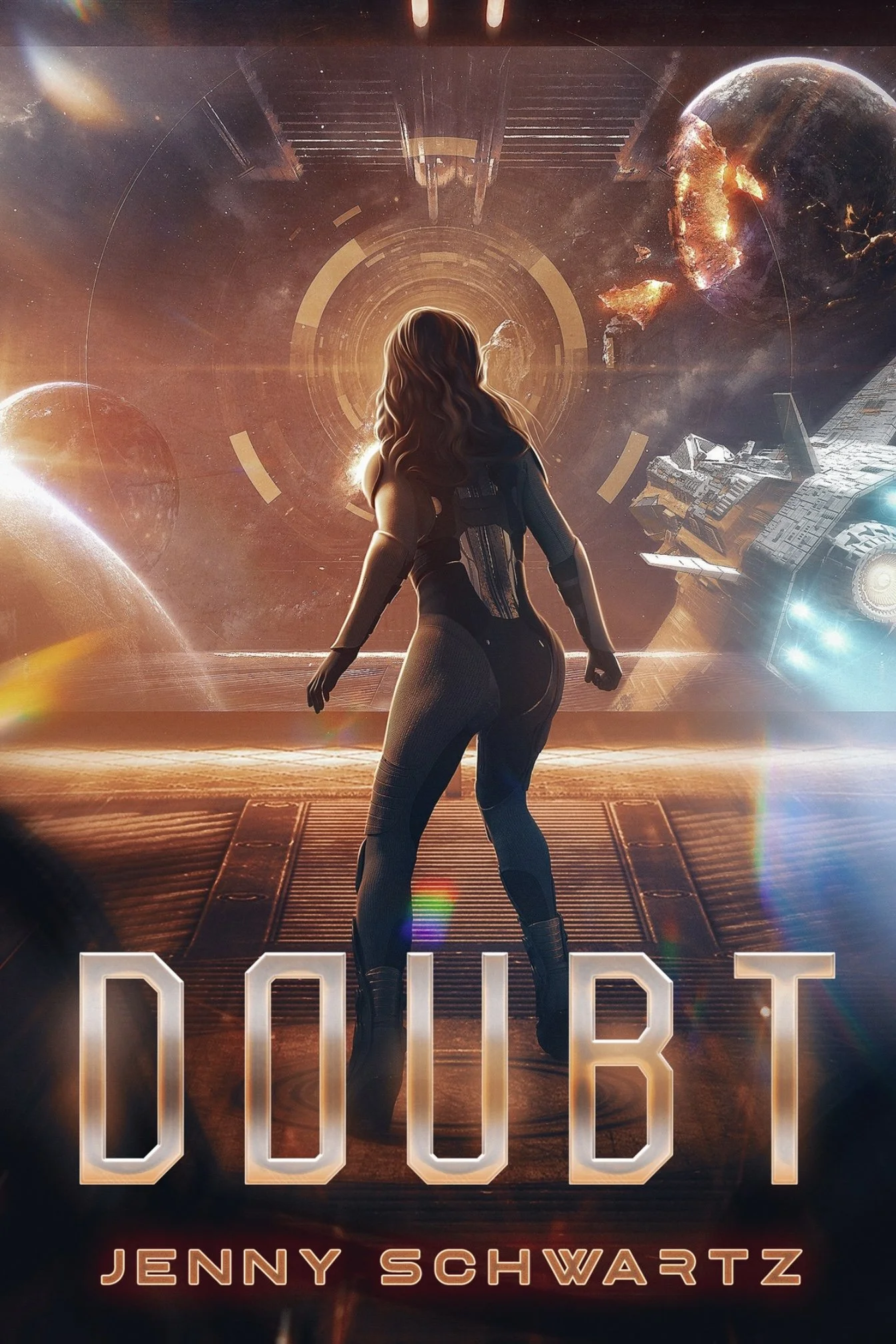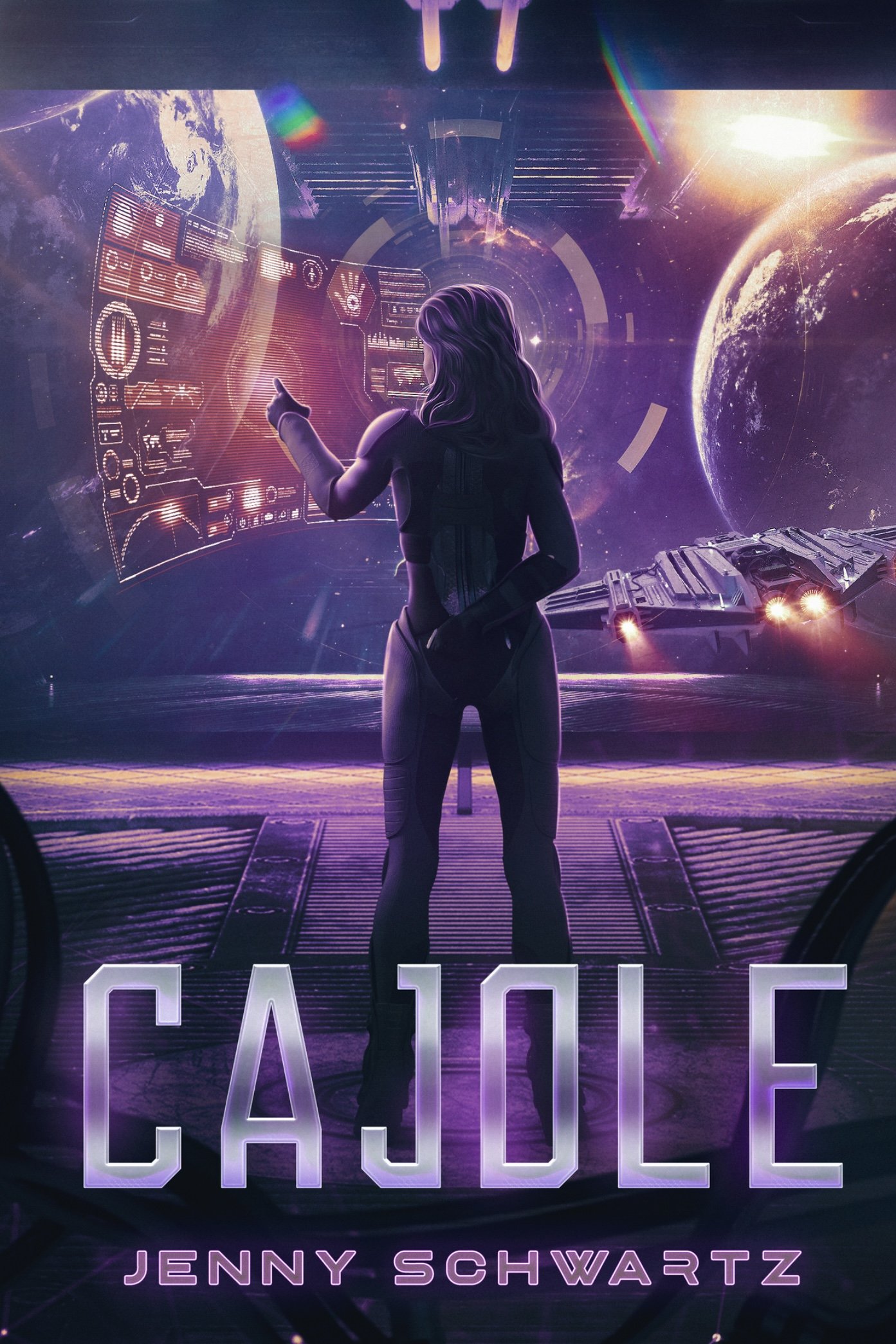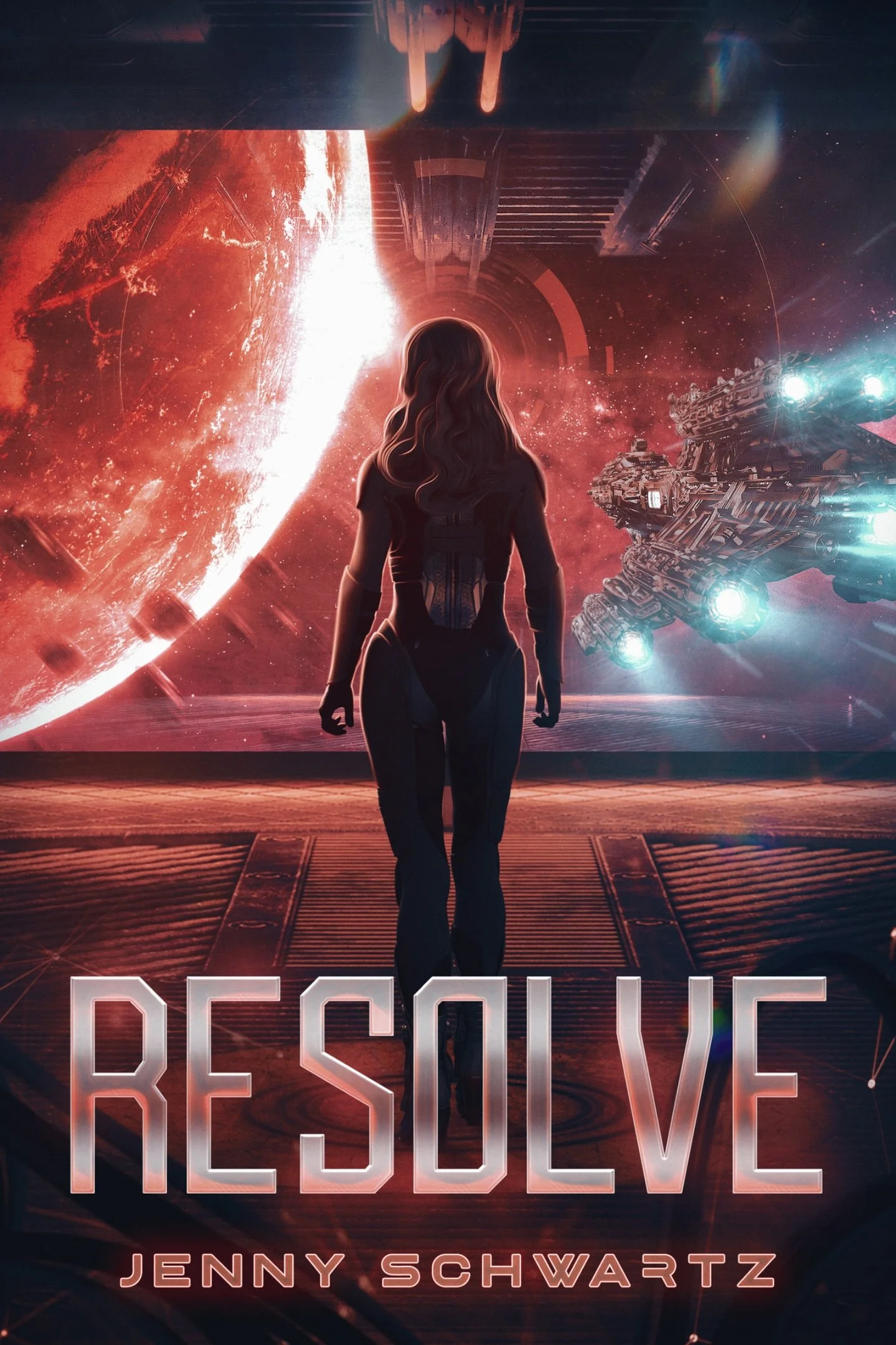Adventures In Xeno-Archeology
As an Amazon associate, I may earn a small commission if you navigate to Amazon from my site and buy something. This will not result in an extra cost to you.
I do a lot of reading, and I make heavy use of my Amazon Kindle Unlimited subscription. This means that a lot of the books I discover are in fact recommended to me by Amazon, based on my previous reads. This is how I discovered the Adventures Of A Xeno-Archeologist series, written by Jenny Schwartz. The five books feel like one long story, broken up into five pieces, which is to say that they are extremely cohesive. The books in order: Astray, Doubt, Rebel, Cajole, and Resolve. I love this series so much that I devoured all five books in two days.
The author does not spend lot of time on expository setup, with the result that in starting the first book, one rather feels like they are already in the middle of the story. This is more work for the reader, of course, but since the story and writing are so entertaining, it works beautifully, as the background is artfully revealed a little at a time in just the right place in the story. However, for the purposes of this review, I’m going to describe that background a little bit and speak a bit about events in the first book. This will include minor spoilers, which I do not believe will negatively impact the reading experience.
“The universal rivers, or the rivers of space, that humanity accessed via the millraces of black holes enabled travel from black hole to black hole at a speed that far exceeded even the faster than light travel fueled by refined blaze ore. Human Sector society could travel between star systems. Universal rivers transversed far greater distances; hypothetically, a well-plotted two month journey could cross multiple galaxies.”
The background/setup: 500 years before our story begins, seven colony ships full of humans came through a black hole, aiming for a particular colony location, only to find that they had exited “the river” (presumably a wormhole space) at the wrong place. An additional dismaying discovery was that the millrace (event horizon) of the wormhole was now somehow barring them from going back through and trying again. The year is never mentioned, but the clear implication is that using wormholes to travel to distant stars and form new colonies is an established practice of humanity. I quite liked the evocative description of wormholes and black holes as “rivers and millraces.”
Fortunately for our stranded colonists, there are six planets within their reach which are varying degrees of habitable. Their “reach” includes faster-than-light travel, so while the new planets are within travel distance of one another, they are not actually close. The FTL drives require a particular ore known as “blaze” to be refined for their fuel cells. This ore proves difficult to find, although humanity has reliably found it throughout the rest of the galaxy. This dearth of what should be a plentiful supply of blaze eventually leads to the discovery that more than one departed or extinct alien species had been in the Human Sector before the Stranding, as humans come to refer to it. And at least one of those alien races already used up the blaze supply, forcing humanity to search for it farther afield.
Humanity spreads out over the planets, settling and searching for blaze. Additionally, through the discovery of power sources called burrs (I have no idea why that name), certain changed humans are able to wield vast power and therefore become the royal rulers of their planets, guarding both their power and their bloodlines. The system mostly works, although there are occasional wars between planets over resources.
The story is told from the point of view of two protagonists. The first is Nora Devi, a widowed “tagger” (solo pilots who map uncharted space and tag the location of resources) who also has some xeno-archeology training from time spent working with a research team, and is now piloting her own little scout ship alone. She comes from a very hard upbringing and has secrets that she cannot allow to be widely known, lest they spell the end of her freedom and possibly her life.
Our other main character is Captain Liam Kimani, in command of the battleship RC Genghis Khan. Liam struck the blow that ended the latest war between two worlds and instead of being considered a hero, he was villified for it. He and his crew have been essentially exiled to the border regions of Human Sector space, which is where he meets Nora, aboard the Border Station.
“Jonah: Do you not perceive shades of gray, complexities and consequences?
Nora: Absolutely, but a lot of discussion around ethics is merely people attempting to defend their choices and ambitions. They’re not actually going to change. If they’re not going to change to align their actions to values, why discuss the values?
Jonah: That is a bleak view of humanity. Perhaps it is an accurate assessment. However, it is not true for me. I am discovering that with an ability to acquire specific knowledge and, since I am embodied, to influence the world, comes a responsibility as to what I do with that knowledge.”
I don’t want to say too much about the story beyond the setup, as that would ruin the delight of discovery for the reader. I will add that in the first book, Nora comes across an alien AI who chooses to embody himself in the shape of an android, and come aboard her ship (uninvited, although eventually welcome). Nora and Jonah (as he chooses to be known) spend a lot of time in philosophical discussion, as Jonah moves from being a passive observer of the universe to a being who can actually have an effect in the universe.
Two gripes about this series: first, there’s not any mention of different languages, and I have a difficult time believing that worlds with light years between them would not have at least some language drift over the course of 500 years. This assumes that all the original colonists spoke the same language, which also seems unlikely to me.
Second, communication between these worlds relies on ships passing between them, and carrying messages. This means news from one world can take months to travel to another. In contrast, Jonah and his disembodied AI kin, being observers, can somehow instantly know what any of them knows. Since they are spread throughout the Human Sector, they have been observing humanity since the Stranding. They know a lot and they share it with each other. However, it’s never made clear (at least in any way I was able understand) how Jonah’s knowledge of events that are far distant from his actual location actually happens in real time. Given that his instantaneous knowledge is frequently essential to the plot, this smacks a little of deux ex machina. Or magic. But then, maybe Arthur C. Clark was right…any sufficiently advanced technology is indistinguishable from magic.
These books are available through Kindle Unlimited on Amazon, which is how I read them, but I loved them so much that I bought all five of them. The series is far-reaching and deeply plotted. The characters are many, varied, and richly drawn, growing and changing in true ways. And the fact that the entire story is told through the lens of our two main characters keeps it grounded and centered. No matter the advanced futuristic technology being discussed, it’s ultimately a people story. My favorite kind of sci-fi.




